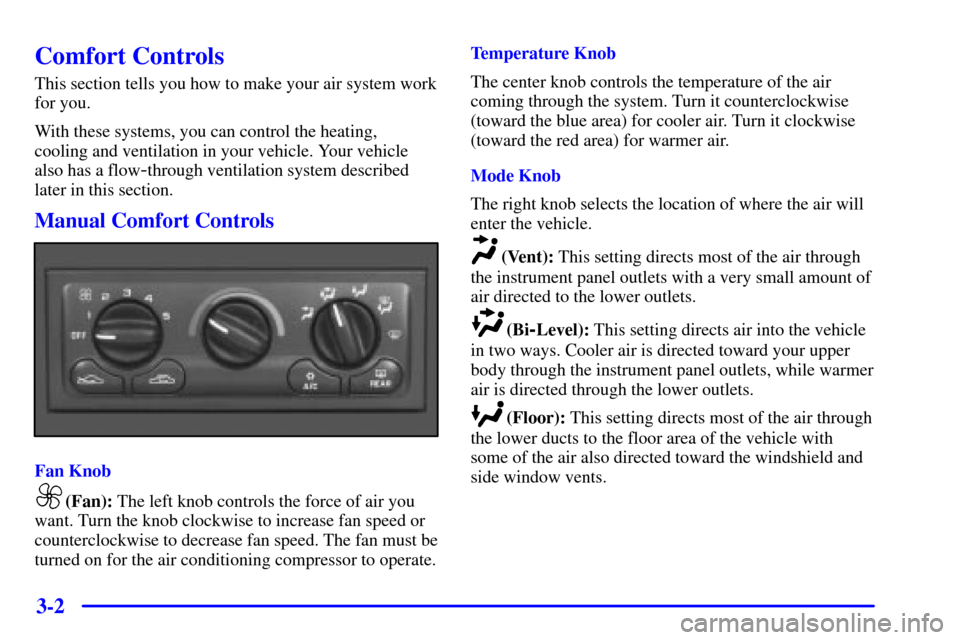Page 4 of 384
iii
Corvette: The American
Dream Machine
In the early '50s, it was only a designer's dream.
Today the Corvette stands alone as America's dream
car
-- a testament to its unmistakable charisma and
the excitement it inspires. Unique styling, powerful
performance and an undeniable panache have made
Corvette one of the most celebrated sports cars in
the world.
In 1953, Corvette produced 300 new lightweight
fiberglass roadsters. A handful went to project engineers,
General Motors managers, and a select group of movie
stars and celebrities. With a two
-speed Powerglide
automatic transmission, Blue Flame six
-cylinder engine,
and gleaming Polo White exterior, the Corvette began its
drive into the heart of America.
Designers freshened up the 'Vette in 1956 by adding a
removable hardtop and the famous Corvette ªcoves.º
The sculptured body enhanced its sporty look, and a
standard 210
-horsepower Chevy V8 engine solidified
Corvette's reputation as a production race car.
Page 178 of 384

3-2
Comfort Controls
This section tells you how to make your air system work
for you.
With these systems, you can control the heating,
cooling and ventilation in your vehicle. Your vehicle
also has a flow
-through ventilation system described
later in this section.
Manual Comfort Controls
Fan Knob
(Fan): The left knob controls the force of air you
want. Turn the knob clockwise to increase fan speed or
counterclockwise to decrease fan speed. The fan must be
turned on for the air conditioning compressor to operate.Temperature Knob
The center knob controls the temperature of the air
coming through the system. Turn it counterclockwise
(toward the blue area) for cooler air. Turn it clockwise
(toward the red area) for warmer air.
Mode Knob
The right knob selects the location of where the air will
enter the vehicle.
(Vent): This setting directs most of the air through
the instrument panel outlets with a very small amount of
air directed to the lower outlets.
(Bi-Level): This setting directs air into the vehicle
in two ways. Cooler air is directed toward your upper
body through the instrument panel outlets, while warmer
air is directed through the lower outlets.
(Floor): This setting directs most of the air through
the lower ducts to the floor area of the vehicle with
some of the air also directed toward the windshield and
side window vents.
Page 187 of 384

3-11 Air Conditioning
On very hot days, the vehicle will cool down more
quickly and economically if you open the windows
long enough to let hot inside air escape. Then keep the
windows closed in order to allow the air conditioning
to work best. Maximum cooling will occur when the
recirculate setting is operating, airflow direction is in the
upper mode, and the temperature control knob (on a
manual climate control system) is turned all the way to
the blue area. These settings will be selected by the
automatic electronic dual climate control system if
operating in AUTO when maximum cooling is required.
When the air conditioning is on, you may sometimes
notice slight changes in the vehicle's engine performance
and power. This is normal. The system is designed to
help fuel economy while maintaining the desired
cooling level.
The air conditioning removes moisture from the air,
so you may notice water dripping from under the
vehicle when it is idling or after it has been turned off.
This is normal.
Heating
The heater works best if you keep the windows closed.
Maximum heating will occur when airflow direction is
in the lower mode and the temperature control knob
(on a manual climate control system) is all the way in
the red area. These settings will be selected by the
automatic electronic dual climate control system if
operating in AUTO when maximum heating is required.
The bi
-level setting is designed for use on sunny days
when the air is only moderately warm or cool. On days
like these, the sun may adequately warm your upper
body, but your lower body may not be warm enough.
The bi
-level setting will direct cooler airflow to your
upper body and warmer air to the floor area.
If you have the optional engine coolant heater and use it
during cold weather 0�F (
-18�C) or lower, the heating
system will provide heat more quickly because the
coolant is already warmed. See ªEngine Coolant Heaterº
in the Index.